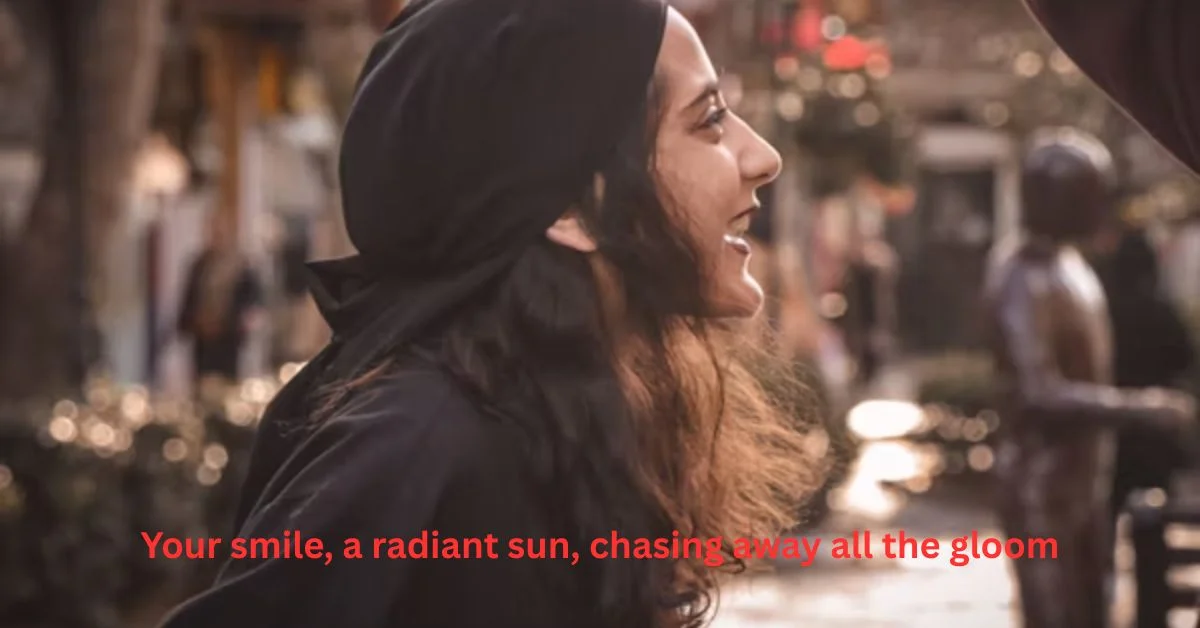In a world fractured by noise, speed, and unpredictability, there’s a quiet power in the human smile. It’s a universal gesture, soft and fleeting, yet capable of lighting up a room, concealing grief, or expressing boundless love. Across cultures and centuries, poets have written about it—not just the smile as a gesture, but as a metaphor for hope, endurance, charm, and sometimes, disguise. In this piece, we delve deep into the soul of this poetic form through the lens of Shayari on smile in English.
Shayari—traditionally associated with Urdu or Hindi poetry—is not bound by language. It is a literary art form that compresses emotion into lyrical brevity. When translated or written originally in English, the essence remains: smile as both subject and symbol, as fragile as light and as enduring as memory. Whether you’re searching for thoughtful expressions to share or seeking emotional connection, this collection and analysis will guide you through one of the most human poetic themes.
1. The Smile in Literature and Poetic Imagination
From Shakespeare’s sonnets to Rumi’s verses, the smile has long been a canvas for human experience. Sometimes it’s the smile of a lover, sometimes of a stranger, sometimes of someone hiding sorrow. Literature repeatedly returns to the smile because it is both a personal and universal symbol.
In poetic traditions, smiles are rarely just about happiness. A smile can be:
- A symbol of silent resistance
- A way to mask pain
- An invitation to love
- A remnant of memory
Shayari, with its love for metaphors and layered meanings, treats smiles not merely as expressions, but as emotional codes.
2. Understanding Shayari in English Context
Shayari, in its original form, is deeply tied to the Urdu-Persian poetic lineage. When brought into English, it demands more than just literal translation. It calls for reimagining emotions into a new linguistic frame, while preserving rhythm, cadence, and emotional compression.
In English, Shayari on smile becomes an exploration—of tone, imagery, and intimacy. It’s not merely about rhyme, but about creating a feeling in just a few lines.
Here’s how Shayari differs from standard poetry:
| Poetry | Shayari |
|---|---|
| Varies in structure | Often short and rhythmic (couplets/quatrains) |
| Can be abstract | Usually emotional and personal |
| Focus on themes or ideas | Focus on expression and emotional impact |
| May prioritize rhyme | Prioritizes emotional sharpness |
3. Why Smile Becomes a Powerful Subject in Shayari
Smile is inherently poetic because it embodies contradiction. We smile when we’re joyful, but also when we want to hide despair. It’s a mask and a mirror, a small act with massive emotional resonance.
In Shayari, the smile is often:
- A metaphor for hope in adversity
- A symbol of attraction in romance
- A final gesture in farewell
- A remembrance in absence
Thus, writing or reading Shayari on smile in English is more than admiring a gesture. It’s unpacking a universe of emotion tucked behind a curved lip.
4. Emotional Layers of Shayari on Smile
When it comes to the smile, Shayari doesn’t view it in a linear way. Instead, it explores multiple emotional truths embedded in a single expression:
1. Joy
A child’s smile, a lover’s grin—pure and uncomplicated joy.
2. Longing
A smile remembered, one you haven’t seen in years.
3. Sorrow
Smiling through pain to keep others from worrying.
4. Irony
Smiling when there’s nothing left to say—because words fail.
5. Love
The smile you fall in love with before you fall in love with the person.
5. Original Shayari on Smile in English (Curated Collection)
Here’s a handpicked collection of original English Shayari that captures the essence of smiles across moods and meanings.
On Joy and Innocence:
Her smile was not loud,
But it quieted every chaos I knew.
A single smile in the morning light,
And even the sun forgot its job.
On Love and Attraction:
I never touched your hand,
But your smile touched my spine.
You smiled once—
And I began writing forever in my mind.
Between all the hellos and goodbyes,
It was your smile that stayed.
On Hidden Pain: Shayari on Smile
My smile learned to lie before my tongue did.
It kept me safe when nothing else could.
I smiled at the mirror,
And it almost believed I was fine.
They saw the curve on my lips,
Not the storm in my lungs.
On Distance and Memory: Shayari on Smile
I remember you in two things—
The silence of night, and that smile I never forgot.
You left,
But your smile stayed behind like sunlight in a closed room.
6. Smile and Hidden Pain: The Dual Nature of Expression
A recurring theme in Shayari is the duality of smiling while hurting. It’s one of the most human contradictions, and shayars (poets) are drawn to it. In psychological terms, smiling under stress is a coping mechanism. In poetry, it becomes a metaphor for resilience, emotional complexity, and quiet dignity.
This type of Shayari connects deeply with people battling depression, anxiety, or loss. It becomes a literary validation of their silent strength.
7. Smile as a Romantic Metaphor
Romantic Shayari often finds its climax in a smile—that moment of unguarded affection, the smallest acknowledgment of connection. Poets often describe how a smile:
- Ends arguments
- Starts stories
- Breaks walls
- Stays longer than presence
In romantic English Shayari, it becomes the anchor of memory.
I forgot your words,
But your smile still writes letters in my sleep.
8. Smile and Inner Strength: A Feminist Reading
In modern interpretations, particularly in feminist readings, the smile becomes a gesture of strength, not submission. Many women smile through bias, expectation, pressure. Poets now reclaim that smile as empowerment, not concealment.
She smiled not to please,
But to remind the world she could.
They tried to silence her,
So she smiled louder.
This reclamation of the smile from a passive symbol to an active resistance is a beautiful evolution of poetic expression.
9. How to Write Shayari on Smile in English
Step-by-Step Guide: Shayari on Smile
1. Start With a Mood
Do you want to write about love, pain, memory, strength, or joy? Define your emotional setting.
2. Use Imagery
Instead of saying “your smile was nice,” say “your smile was a lighthouse in my storm.”
3. Keep It Short
Two to four lines is ideal. Brevity amplifies emotion in Shayari.
4. Use Contrast
The smile and the storm. The lips and the silence. Contrast evokes deeper emotion.
5. End With Impact
Your last line should either offer revelation, closure, or provoke thought.
Example:
You smiled like it was nothing,
And I rebuilt my whole world on that lie.
10. Conclusion: Shayari on Smile
To write or read Shayari on smile in English is to walk a fine line between simplicity and depth. It’s about noticing what others miss—a brief upturn of the lips, a light in someone’s eyes, the stories that come with silence. The smile is more than a gesture; it is a quiet witness to everything we endure and everything we hope for.
This form of poetry, though brief in structure, expands the inner world. It connects generations, cultures, and emotions. Whether you’re a poet or a reader, these verses offer something rare: a reason to pause, reflect, and maybe, smile.
11. FAQs
1. What is Shayari on smile in English?
It is a poetic form that explores the emotional depth of a smile using English language while retaining Shayari’s lyrical tone.
2. Can Shayari on smile express pain?
Yes. Many Shayari verses use the smile as a metaphor for concealed sorrow or strength during difficult times.
3. Is Shayari only romantic?
Not necessarily. While many Shayari themes are romantic, smiles can also represent friendship, grief, resilience, and joy.
4. How can I write Shayari on smile?
Focus on emotion, use metaphors, write in short couplets, and let the smile represent something deeper—like memory or healing.
5. Why is Shayari on smile so popular?
Because a smile is universally understood and emotionally powerful. Shayari captures its many meanings in just a few lines.
For more information, click here.









